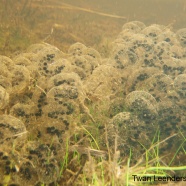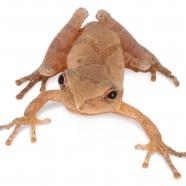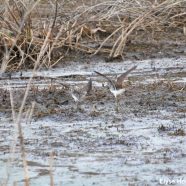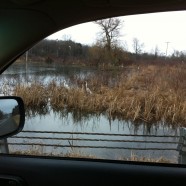Amphibians Abound
The first wave of amphibian breeding has now passed, and early vernal pool breeders are making room for the next wave of frogs to show up at our local wetlands. American toads, pickerel frogs and leopard frogs have been calling for a week or so now, and green frogs and bullfrogs will join in soon, Of course, the spring peepers just won’t stop calling at all… Did you know that you can easily tell the difference between frog eggs and toad eggs? Frog eggs are always laid in a clump or a floating raft, while our toads produce long, corkscrewing strands with a single line of eggs in the center...
Read MoreSpring Peepers
Spring Peepers are a type of small tree frog. Truthful to their name, they emerge from hibernation in early spring. Soon after, the males – often hundreds at a time – will take over wetlands and call on warm and rainy nights to stake out a territory and attract a mate. Their surprisingly loud “peep” calls are usually produced from a safe location hidden in dense vegetation, and it can be difficult to spot them. An inflatable vocal sac on their throat serves as an amplifier, which allows them to call very loudly. The sound produced by a chorus of these inch-long frogs can be truly deafening...
Read MoreDynamic Habitats
I got a text the other day from my dad saying, “Hey if you can, bring your boots over so we can investigate the beaver pond.” Behind my parents home is a beautiful wetland system that sits right in the valley, with forested hillsides surrounding. What was once a stream has since been turned into a marsh thanks to the work of some busy beavers. With dams on either end of the marsh, the water has been held back and has created great habitat for many birds, amphibians and reptiles. The marsh is full of snapping and painted turtles, peepers that are so numerous that their peeps...
Read MoreI Spy With My Little Eye
As warmer temperatures are finally arriving in Western New York, wetlands like the beautiful one pictured here are rapidly thawing out. These wetlands scattered throughout the area become an attractive place for many breeding bird species to belt out their songs and flit about, attempting to attract a mate. In this particular photograph there are two bird species common to wetland habitats, can you find them? Elyse Henshaw Conservation Technician
Read MoreGreat Egrets in Ashville
Although Great Egrets are not uncommon in some of the coastal sites we work in, they are pretty rare inland. The Jamestown area usually does not see many of these stately birds, but they show up occasionally suitable wetlands during migration. Yesterday afternoon I ran into former RTPI Facility Manager Miley Miller, who mentioned seeing a Great Egret foraging in a wetland in Ashville. Since that wetland was on my way home I decided to check it out and was happily surprised to see not one but four Great Egrets foraging there! Of course I was not prepared for this encountered and only managed...
Read More








